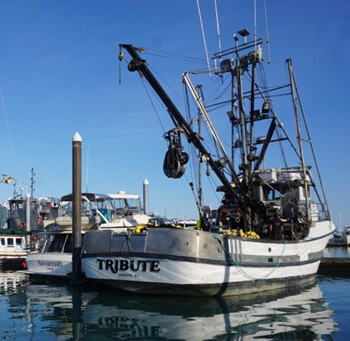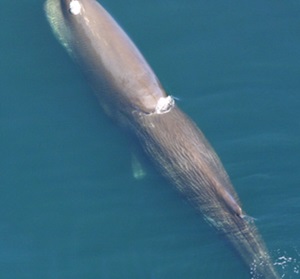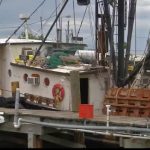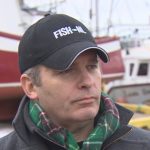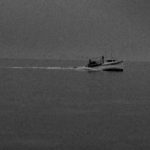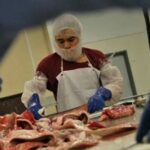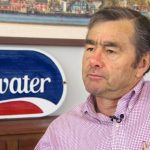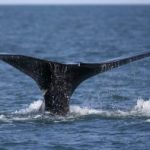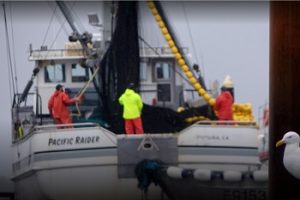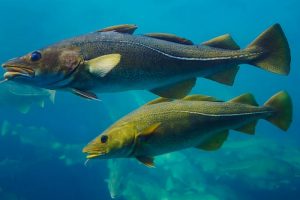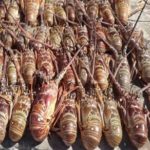Tag Archives: NOAA
‘Bunch Of Suits Trying To Cover Their Tracks’: Beach Town Locals Slam Offshore Wind Developer For Polluting Shores
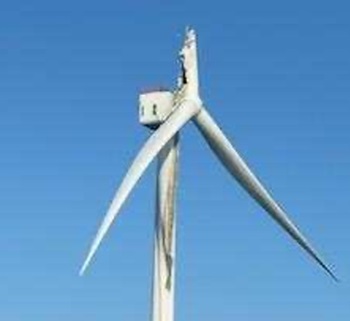 Local lobsterman Dan Pronk lamented the effects the debris has had on his business and the environment during the town hall meeting while holding a piece of fiberglass that had washed up on the beach, while also addressing Vineyard Wind CEO Klaus Moeller personally, according to another video posted on X by the Nantucket Current. “I fish 800 lobster traps right where you’re putting these tombstones, which is also the end of my business… When you apply [fiberglass]… you have to wear respirators. For what reason? Because it’s toxic. If you breathe those fumes… you’ll get higher than a rat,” he continued. “So, it is toxic. What do you have to say about that, Klaus?” more, >>CLICK TO READ<< 08:37
Local lobsterman Dan Pronk lamented the effects the debris has had on his business and the environment during the town hall meeting while holding a piece of fiberglass that had washed up on the beach, while also addressing Vineyard Wind CEO Klaus Moeller personally, according to another video posted on X by the Nantucket Current. “I fish 800 lobster traps right where you’re putting these tombstones, which is also the end of my business… When you apply [fiberglass]… you have to wear respirators. For what reason? Because it’s toxic. If you breathe those fumes… you’ll get higher than a rat,” he continued. “So, it is toxic. What do you have to say about that, Klaus?” more, >>CLICK TO READ<< 08:37
Task force report identifies research needs to better understand Alaska salmon problems
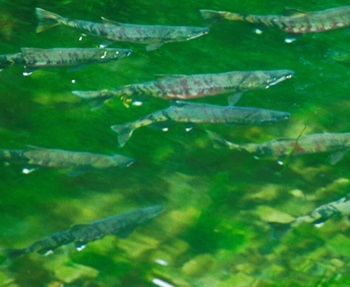 Fishery managers overseeing Alaska’s faltering salmon runs should be able to rely on a more comprehensive and holistic approach to science that considers all habitat, from the middle of the ocean to freshwater spawning streams far inland, according to a task force report on salmon research needs. The report was issued last week by the Alaska Salmon Research Task Force, a group established through a 2022 act of Congress to identify knowledge gaps and research needs. The task force comprises close to 20 members and includes scientists, fishers, Indigenous community representatives and agency managers. In addition to those members, the effort included a special 42-member working group focused on salmon problems in the Yukon and Kuskokwim River drainages. The report follows a year’s worth of meetings and consultations. more, >>CLICK TO READ<< 17:34
Fishery managers overseeing Alaska’s faltering salmon runs should be able to rely on a more comprehensive and holistic approach to science that considers all habitat, from the middle of the ocean to freshwater spawning streams far inland, according to a task force report on salmon research needs. The report was issued last week by the Alaska Salmon Research Task Force, a group established through a 2022 act of Congress to identify knowledge gaps and research needs. The task force comprises close to 20 members and includes scientists, fishers, Indigenous community representatives and agency managers. In addition to those members, the effort included a special 42-member working group focused on salmon problems in the Yukon and Kuskokwim River drainages. The report follows a year’s worth of meetings and consultations. more, >>CLICK TO READ<< 17:34
Gulf of Mexico Shrimp Fishery to Re-Open Off Texas on July 15, 2024
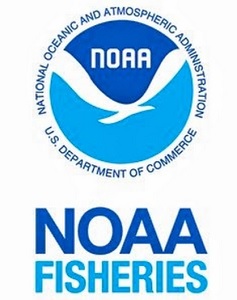 NOAA Fisheries announces federal waters from 9 to 200 nautical miles off Texas will open to shrimp trawling beginning 30 minutes after official sunset, local time, on July 15, 2024, corresponding to the time Texas opens its waters to shrimp trawling. The waters off Texas are closed to shrimp fishing annually to allow brown shrimp to reach a larger and more valuable size prior to harvest, and to prevent waste of brown shrimp that might otherwise be discarded because of their small size. The fishery closed on May 15, 2024. The re-opening date for Texas waters is based on the results of biological sampling by the Texas Parks and Wildlife Department and the assessment of maximum tidal durations. In addition, Texas regulations only allow a 60-day closure; the 60-day period expires July 15, 2024. more, >>CLICK TO READ<< 09:47
NOAA Fisheries announces federal waters from 9 to 200 nautical miles off Texas will open to shrimp trawling beginning 30 minutes after official sunset, local time, on July 15, 2024, corresponding to the time Texas opens its waters to shrimp trawling. The waters off Texas are closed to shrimp fishing annually to allow brown shrimp to reach a larger and more valuable size prior to harvest, and to prevent waste of brown shrimp that might otherwise be discarded because of their small size. The fishery closed on May 15, 2024. The re-opening date for Texas waters is based on the results of biological sampling by the Texas Parks and Wildlife Department and the assessment of maximum tidal durations. In addition, Texas regulations only allow a 60-day closure; the 60-day period expires July 15, 2024. more, >>CLICK TO READ<< 09:47
Fishermen get probation, fines for scheme to avoid herring quotas
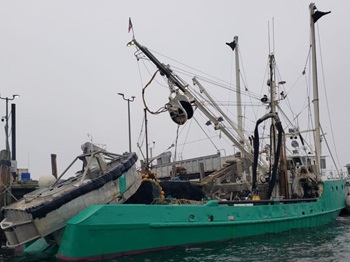 Eight men from Maine and one from New Hampshire – comprised of the owner, captains, and crew members of a commercial fishing vessel, the Western Sea, and owners of local Maine fisheries – have been sentenced for knowingly subverting commercial fishing reporting requirements. The final six sentences in the complex case were handed down this week by U.S. District Judge Jon Levy in U.S. District Court in Portland, the U.S. Attorney’s Office said Thursday July 11. The Western Sea is a fishing vessel that operated out of Rockland and fished for Atlantic herring. Atlantic herring is the primary bait fish for Maine’s lobster industry. more, >>CLICK TO READ<< 19:49
Eight men from Maine and one from New Hampshire – comprised of the owner, captains, and crew members of a commercial fishing vessel, the Western Sea, and owners of local Maine fisheries – have been sentenced for knowingly subverting commercial fishing reporting requirements. The final six sentences in the complex case were handed down this week by U.S. District Judge Jon Levy in U.S. District Court in Portland, the U.S. Attorney’s Office said Thursday July 11. The Western Sea is a fishing vessel that operated out of Rockland and fished for Atlantic herring. Atlantic herring is the primary bait fish for Maine’s lobster industry. more, >>CLICK TO READ<< 19:49
How the Supreme Court rescued my NJ fishing firm that bureaucrats almost sank
 The Supreme Court just sided with my New Jersey-based, family-owned fishing business, and may have even saved it. That’s the reality of the court’s June 28 decision in a case called Loper Bright Enterprises v. Raimondo, which overturned the “Chevron doctrine” that gave unchecked power to federal bureaucrats. Yet the media reaction hasn’t focused on what the ruling means for regular people and job creators like me. The pundits say that Washington, DC, will descend into chaos because the justices stopped unelected and unaccountable bureaucrats from deciding for themselves what’s “reasonable” under federal law. But as I can attest, that power quickly leads to abuse. The Supreme Court has protected the American people from regulators run amok, and from a Congress that won’t do its job. I was one of the small business owners who sued the federal government in this case. By Wayne Reichle, more, >>CLICK TO READ<< 21:20
The Supreme Court just sided with my New Jersey-based, family-owned fishing business, and may have even saved it. That’s the reality of the court’s June 28 decision in a case called Loper Bright Enterprises v. Raimondo, which overturned the “Chevron doctrine” that gave unchecked power to federal bureaucrats. Yet the media reaction hasn’t focused on what the ruling means for regular people and job creators like me. The pundits say that Washington, DC, will descend into chaos because the justices stopped unelected and unaccountable bureaucrats from deciding for themselves what’s “reasonable” under federal law. But as I can attest, that power quickly leads to abuse. The Supreme Court has protected the American people from regulators run amok, and from a Congress that won’t do its job. I was one of the small business owners who sued the federal government in this case. By Wayne Reichle, more, >>CLICK TO READ<< 21:20
Maine leaders split on environmental regulation ruling by US Supreme Court
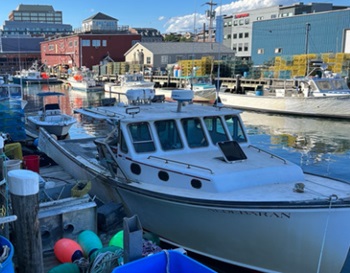 By a vote of 6-3, the Supreme Court overturned the Chevron v. Natural Resources Defense Council ruling from 1984. Governor Janet Mills shared concerns that this decision could impact how federal agencies protect the health and safety of Americans. Maine House Minority Leader Billy Bob Faulkingham, also a lobster fisherman, says this could help in their fight against federal fishing regulations. “This really opens up a whole new avenue for people that feel like they’ve been hurt by the government to challenge that,” Faulkingham said. 5 photos, >>CLICK TO READ<< 09:08
By a vote of 6-3, the Supreme Court overturned the Chevron v. Natural Resources Defense Council ruling from 1984. Governor Janet Mills shared concerns that this decision could impact how federal agencies protect the health and safety of Americans. Maine House Minority Leader Billy Bob Faulkingham, also a lobster fisherman, says this could help in their fight against federal fishing regulations. “This really opens up a whole new avenue for people that feel like they’ve been hurt by the government to challenge that,” Faulkingham said. 5 photos, >>CLICK TO READ<< 09:08

An Optimist’s view: Death of the Chevron Deference
My name is David Goethel. I am a 55 year plus commercial fisherman, research biologist and former fishery manager. As author of Endangered Species/Chronicles of A new England Fisherman I discuss these topics and a lawsuit I filed in 2015 with the legal group Cause of Action over the legal concept known as Chevron Deference. Most people believe Congress writes laws, the Executive Branch carries out those laws and the Judicial Branch interprets and clarifies whether aspects of those laws are Constitutional and correctly applied. It turns out under a doctrine called “Chevron Deference” the regulatory bureaucracy can deem a law unclear or ambiguous and create any regulation the agency decides it needs to carry out its bureaucratic function. Until this past Friday, the courts gave deference to the regulators as the “recognized experts” even though no proof is required and no test for ambiguity is applied. The Supreme Court overturned Chevron Friday saying they had “placed a tombstone on its grave”. Fishermen, including me, had sued saying that unelected regulators should not have this vast power over our lives. more, >>CLICK TO READ<< 20:18
Gliders: Scientists add more underwater robots to monitor North Atlantic right whales
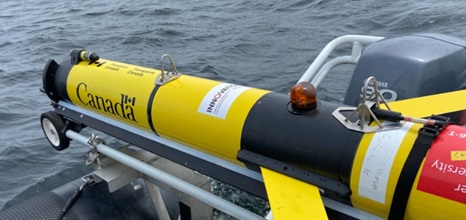 In the race to protect the endangered species, researchers are bringing in more underwater robots—unmanned vehicles known as gliders that slowly patrol the Gulf of St. Lawrence, passively listening for whales. Gliders can stay at sea for months, move far offshore and work in all types of weather. They’re equipped with underwater microphones that scientists use to track the animals. The team added a third glider to its fleet this summer, expanding its ability to monitor whales’ whereabouts by sea and air. It’s collaborative effort involving researchers from University of New Brunswick, Ocean Tracking Network, Transport Canada and Woods Hole Oceanographic. more, >>CLICK TO READ<< 19:37
In the race to protect the endangered species, researchers are bringing in more underwater robots—unmanned vehicles known as gliders that slowly patrol the Gulf of St. Lawrence, passively listening for whales. Gliders can stay at sea for months, move far offshore and work in all types of weather. They’re equipped with underwater microphones that scientists use to track the animals. The team added a third glider to its fleet this summer, expanding its ability to monitor whales’ whereabouts by sea and air. It’s collaborative effort involving researchers from University of New Brunswick, Ocean Tracking Network, Transport Canada and Woods Hole Oceanographic. more, >>CLICK TO READ<< 19:37
Opinion: The Fisheries Act is crucial to speed disaster relief to American fisheries
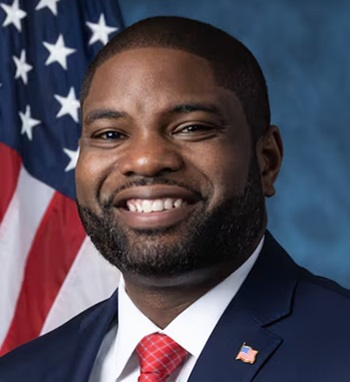 By the time NOAA and OMB finally approve and allocate disaster relief, small businesses and fisheries are already devastated and, in some cases, may have already been forced to close shop. This self-induced, slow-moving bureaucratic process is unacceptable. Overall, the Fishes Act expedites the deployment of federal fishery disaster relief by cutting unnecessary red tape and enacting a 30-day decision requirement for the Office of Management and Budget to either deny or approve a state’s spending plan. What we hope to do with this bill is to throw American fisheries and coastal communities a life raft to stay afloat post-disaster. U.S. fisheries support millions of jobs and bring in billions of dollars to the broader U.S. economy each year. more, >>CLICK TO READ<< 10:17
By the time NOAA and OMB finally approve and allocate disaster relief, small businesses and fisheries are already devastated and, in some cases, may have already been forced to close shop. This self-induced, slow-moving bureaucratic process is unacceptable. Overall, the Fishes Act expedites the deployment of federal fishery disaster relief by cutting unnecessary red tape and enacting a 30-day decision requirement for the Office of Management and Budget to either deny or approve a state’s spending plan. What we hope to do with this bill is to throw American fisheries and coastal communities a life raft to stay afloat post-disaster. U.S. fisheries support millions of jobs and bring in billions of dollars to the broader U.S. economy each year. more, >>CLICK TO READ<< 10:17
Nearly $12 million headed to Alaska in latest infusion of fishery-disaster aid
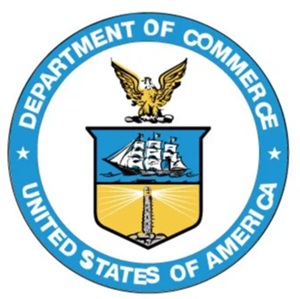 The aid money is for disasters declared for the 2022 chum salmon failure on the Kuskokwim River and the 2021-2022 sockeye salmon failure that affected Upper Cook Inlet setnet fishers. Aid for the Kuskokwim River disaster totaled $331,920, while aid for the Upper Cook Inlet sockeye disaster totaled nearly $11.5 million, according to the National Oceanic and Atmospheric Administration, which is a branch of the Commerce Department. Alaska is not the only state affected by poor salmon returns. Along with Friday’s announcement of aid for those affected by the Alaska salmon disasters, the Commerce Department announced $403,978 in aid for the Port Gamble S’Klallam Tribe’s 2021 Puget Sound fall chum and coho salmon fisheries in Washington state. more, >>CLICK TO READ<< 11:50
The aid money is for disasters declared for the 2022 chum salmon failure on the Kuskokwim River and the 2021-2022 sockeye salmon failure that affected Upper Cook Inlet setnet fishers. Aid for the Kuskokwim River disaster totaled $331,920, while aid for the Upper Cook Inlet sockeye disaster totaled nearly $11.5 million, according to the National Oceanic and Atmospheric Administration, which is a branch of the Commerce Department. Alaska is not the only state affected by poor salmon returns. Along with Friday’s announcement of aid for those affected by the Alaska salmon disasters, the Commerce Department announced $403,978 in aid for the Port Gamble S’Klallam Tribe’s 2021 Puget Sound fall chum and coho salmon fisheries in Washington state. more, >>CLICK TO READ<< 11:50
State and federal fisheries concerns addressed at Peltola public meeting
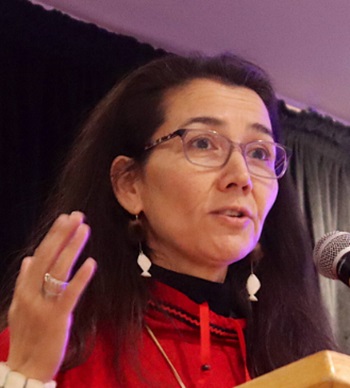 U.S. Rep. Mary Peltola, D-Alaska, held a fish-focused telephone town hall meeting on Thursday, June 20, during which people from across the state voiced concerns related to both state and federal fisheries. Those who called into the meeting, identified by first name only, provided both questions to Peltola and general comments. Callers expressed frustration with what they said were mixed messaging in fisheries management, the lack of understanding among elected officials, and the need for bipartisan work in addressing these issues. H.R. 8508, sponsored by Peltola and two others, authorizes National Oceanic and Atmospheric Administration to reauthorize their Bycatch Reduction and Engineering Program. The bill was referred to the House Committee on Natural Resources in May. more, >>CLICK TO READ<< 09:17
U.S. Rep. Mary Peltola, D-Alaska, held a fish-focused telephone town hall meeting on Thursday, June 20, during which people from across the state voiced concerns related to both state and federal fisheries. Those who called into the meeting, identified by first name only, provided both questions to Peltola and general comments. Callers expressed frustration with what they said were mixed messaging in fisheries management, the lack of understanding among elected officials, and the need for bipartisan work in addressing these issues. H.R. 8508, sponsored by Peltola and two others, authorizes National Oceanic and Atmospheric Administration to reauthorize their Bycatch Reduction and Engineering Program. The bill was referred to the House Committee on Natural Resources in May. more, >>CLICK TO READ<< 09:17
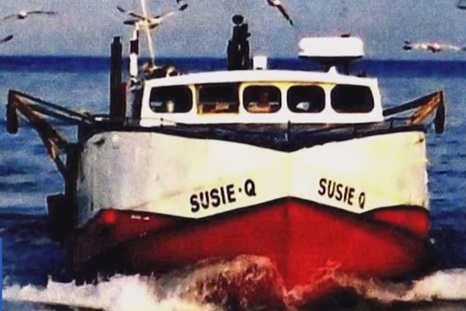
‘We need it desperately’: Great Lakes Commercial Fishermen look for help as industry shrinks
Commercial fishing on the Great Lakes began 150 years ago, and fishermen once numbered in the thousands. Now, only a handful of businesses are still at it, and many are aging out and looking for help. Jamie LeClair represents the fifth generation involved in her family-run commercial fishing business. Titus Seilheimer, a fisheries specialist for the Wisconsin Sea Grant, said the industry needs to start training the next generation of commercial fishermen. “There are concerns. A lot of folks I work with are getting older, and the fleet is getting grayer,” said Seilheimer. “That’s an issue here in the Great Lakes, but really any fishery.” Video, more, >>CLICK TO READ<< 12:57
OPINION: Peltola pulls for Alaska fishermen, By Linda Behnken
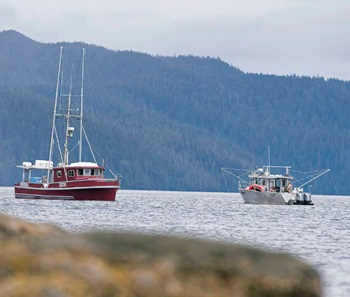 Wild seafood provides food security and livelihoods across the country, but nowhere is that more true than in Alaska. We are fortunate to have a leader who not only has her own boots in fisheries but is bold enough to drive hard conversations around our biggest challenges. In the North Pacific, that includes bycatch management and habitat protection — not only as a foundation for sustainable management, but as a critical part of climate resilience. We’ve seen the complete collapse of two iconic Alaska crab species, and elimination of subsistence fishing on major rivers with communities highly dependent upon that food resource. We’ve witnessed the abrupt crash of Gulf of Alaska cod following the 2014-2016 marine heat wave. As fish stocks and ocean conditions change more quickly and more substantially than ever before, we need conservation tools that match the pace with that change to safeguard ocean health. more, >>CLICK TO READ<< 07:33
Wild seafood provides food security and livelihoods across the country, but nowhere is that more true than in Alaska. We are fortunate to have a leader who not only has her own boots in fisheries but is bold enough to drive hard conversations around our biggest challenges. In the North Pacific, that includes bycatch management and habitat protection — not only as a foundation for sustainable management, but as a critical part of climate resilience. We’ve seen the complete collapse of two iconic Alaska crab species, and elimination of subsistence fishing on major rivers with communities highly dependent upon that food resource. We’ve witnessed the abrupt crash of Gulf of Alaska cod following the 2014-2016 marine heat wave. As fish stocks and ocean conditions change more quickly and more substantially than ever before, we need conservation tools that match the pace with that change to safeguard ocean health. more, >>CLICK TO READ<< 07:33
Crews pull dead whale from Casco Bay
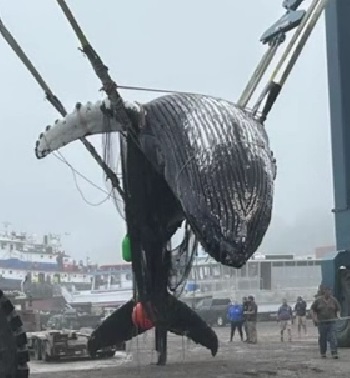 A dead whale which appeared to be wrapped in nets was pulled from Casco Bay on Thursday, officials say. Crews were attempting to load the whale onto a flatbed truck using a boat lift as of 3 p.m. The National Oceanic and Atmospheric Administration said on social media Marine Mammals of Maine and the Maine Marine Patrol were notified of a 40-foot humpback whale in a net off the coast of Cape Elizabeth on Wednesday. NOAA said the whale is known as “Chunk” and was first seen in 2015, the same year she was found in a “severe entanglement. “Video, more, >>CLICK TO READ<< 16:35
A dead whale which appeared to be wrapped in nets was pulled from Casco Bay on Thursday, officials say. Crews were attempting to load the whale onto a flatbed truck using a boat lift as of 3 p.m. The National Oceanic and Atmospheric Administration said on social media Marine Mammals of Maine and the Maine Marine Patrol were notified of a 40-foot humpback whale in a net off the coast of Cape Elizabeth on Wednesday. NOAA said the whale is known as “Chunk” and was first seen in 2015, the same year she was found in a “severe entanglement. “Video, more, >>CLICK TO READ<< 16:35
Hello Mayors: FOIA Emails Suggest US Wind Requested Coastal Towns Keep Initial Offshore Wind Talks Private
 New light is being shed on offshore wind company US Wind’s talks with the mayors comprising the Association of Coastal Towns (ACT) with the release of email correspondence between the two. US Wind and the ACT have been in talks over US Wind’s proposed offshore projects off the coast of Maryland that would potentially see a power cable landing in Delaware Seashore State Park. US Wind has also presented community benefits packages to the Coastal Towns which include proposed annual payments over twenty years worth $2 million to each town. Following a Freedom of Information Act request (FOIA) submitted to the ACT, WBOC has received copies of the emails between ACT and US Wind that suggest the offshore wind company’s desire to keep the initial discussions shielded from the public. more, >>CLICK TO READ<< 08:55
New light is being shed on offshore wind company US Wind’s talks with the mayors comprising the Association of Coastal Towns (ACT) with the release of email correspondence between the two. US Wind and the ACT have been in talks over US Wind’s proposed offshore projects off the coast of Maryland that would potentially see a power cable landing in Delaware Seashore State Park. US Wind has also presented community benefits packages to the Coastal Towns which include proposed annual payments over twenty years worth $2 million to each town. Following a Freedom of Information Act request (FOIA) submitted to the ACT, WBOC has received copies of the emails between ACT and US Wind that suggest the offshore wind company’s desire to keep the initial discussions shielded from the public. more, >>CLICK TO READ<< 08:55
2024 Northeast Spring Bottom Trawl Survey Summary
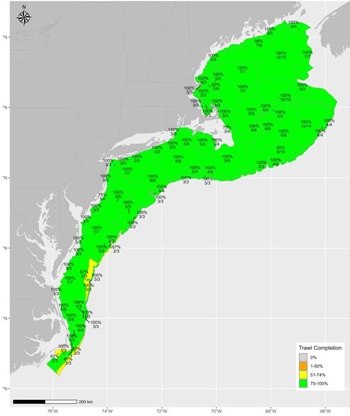 The 2024 Spring Bottom Trawl Survey began on March 6 and completed operations on May 13 aboard the NOAA Ship Henry B. Bigelow. The survey operates on the Northwest Atlantic continental shelf, sampling at stations from Cape Lookout, North Carolina to Canada’s Scotian Shelf. We planned 377 trawl survey stations and completed 367, for a high completion rate of 97 percent. We sampled plankton at a subset of stations. We took 111 bongo samples of 116 planned, or 96 percent. Data collected include fish age, length, weight, sex, maturity and food habits. All are critical data used in regional fish stock assessments. These assessments help inform fishery management decisions by the New England and Mid-Atlantic Fishery Management Councils, as well as the Atlantic States Marine Fisheries Commission. Charts, photo gallery, more, >>CLICK TO READ<< 13:20
The 2024 Spring Bottom Trawl Survey began on March 6 and completed operations on May 13 aboard the NOAA Ship Henry B. Bigelow. The survey operates on the Northwest Atlantic continental shelf, sampling at stations from Cape Lookout, North Carolina to Canada’s Scotian Shelf. We planned 377 trawl survey stations and completed 367, for a high completion rate of 97 percent. We sampled plankton at a subset of stations. We took 111 bongo samples of 116 planned, or 96 percent. Data collected include fish age, length, weight, sex, maturity and food habits. All are critical data used in regional fish stock assessments. These assessments help inform fishery management decisions by the New England and Mid-Atlantic Fishery Management Councils, as well as the Atlantic States Marine Fisheries Commission. Charts, photo gallery, more, >>CLICK TO READ<< 13:20
Would offshore wind turbines save or ruin the Jersey Shore? Debaters rumble in Berkeley
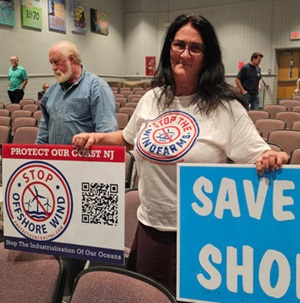 Police officers filled Central Regional High School on Tuesday night, where tensions ran high as critics and proponents of electricity generated by offshore wind faced off with impassioned speeches during a hearing held by the New Jersey Department of Environmental Protection. Capt. Ed Baxter, a scalloper who docks at Point Pleasant Beach, said dredging to bury the power cables outside of important fishing areas, such as the Manasquan Inlet and Shark River, would have serious impacts on commercial fishermen. Rose Willis, a member of the Fishermen’s Dock Cooperative of Point Pleasant Beach, said that not only would local commercial fishing companies be affected by the offshore wind project, but also many small businesses that service or buy from their industry. more, >>CLICK TO READ<< 16:14
Police officers filled Central Regional High School on Tuesday night, where tensions ran high as critics and proponents of electricity generated by offshore wind faced off with impassioned speeches during a hearing held by the New Jersey Department of Environmental Protection. Capt. Ed Baxter, a scalloper who docks at Point Pleasant Beach, said dredging to bury the power cables outside of important fishing areas, such as the Manasquan Inlet and Shark River, would have serious impacts on commercial fishermen. Rose Willis, a member of the Fishermen’s Dock Cooperative of Point Pleasant Beach, said that not only would local commercial fishing companies be affected by the offshore wind project, but also many small businesses that service or buy from their industry. more, >>CLICK TO READ<< 16:14
Lisa Murkowski concerned with NOAA fisheries’ to list Alaska Chinook Salmon as endangered
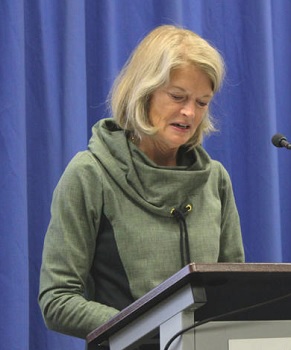 In Washington D.C. on Thursday, NOAA Fisheries announced a petition to list Gulf of Alaska Chinook Salmon as “threatened or endangered” under the Endangered Species Act. Senator Lisa Murkowski expressed her concern in the following statement: “Incredibly, NOAA is moving ahead even after finding that the Wild Fish Conservancy’s petition ‘contained numerous factual errors, omissions, incomplete references, and unsupported assertions and conclusions.’ As we fight to save our salmon and salmon fisheries alike, we need to rely on the best available science, instead of half-baked petitions intended to get conservation groups a foot in the door to attack our fisheries and resource development.” more, >>CLICK TO READ<< 09:54
In Washington D.C. on Thursday, NOAA Fisheries announced a petition to list Gulf of Alaska Chinook Salmon as “threatened or endangered” under the Endangered Species Act. Senator Lisa Murkowski expressed her concern in the following statement: “Incredibly, NOAA is moving ahead even after finding that the Wild Fish Conservancy’s petition ‘contained numerous factual errors, omissions, incomplete references, and unsupported assertions and conclusions.’ As we fight to save our salmon and salmon fisheries alike, we need to rely on the best available science, instead of half-baked petitions intended to get conservation groups a foot in the door to attack our fisheries and resource development.” more, >>CLICK TO READ<< 09:54
NOAA starts review process to list Alaska Chinooks as threatened or endangered
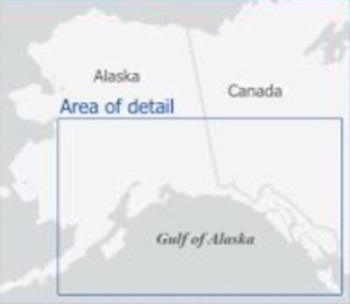 NOAA Fisheries on Thursday announced a 90-day finding on a petition to list Gulf of Alaska Chinook salmon “or any evolutionarily significant unit that may exist in the petitioned area, as a threatened or endangered species under the Endangered Species Act and to designate critical habitat concurrent with the listing.” The listing proposal comes after pressure from the Wild Fish Conservancy in Seattle, which filed a petition in January calling for federal protection of Alaska Chinook. “For decades, scientists have been sounding the alarm that Alaska’s Chinook are in dire trouble,” said Emma Helverson, executive director of the Wild Fish Conservancy. “Despite existing management plans and years of efforts by the state of Alaska, Chinook salmon continue to decline in abundance, size, diversity, and spatial structure throughout the state. Through this action, we are asking the federal government to undertake a formal status review and implement protections warranted under the Endangered Species Act, including designating critical habitat protections, to ensure the survival of these iconic fish.” more, >>CLICK TO READ<< 12:33
NOAA Fisheries on Thursday announced a 90-day finding on a petition to list Gulf of Alaska Chinook salmon “or any evolutionarily significant unit that may exist in the petitioned area, as a threatened or endangered species under the Endangered Species Act and to designate critical habitat concurrent with the listing.” The listing proposal comes after pressure from the Wild Fish Conservancy in Seattle, which filed a petition in January calling for federal protection of Alaska Chinook. “For decades, scientists have been sounding the alarm that Alaska’s Chinook are in dire trouble,” said Emma Helverson, executive director of the Wild Fish Conservancy. “Despite existing management plans and years of efforts by the state of Alaska, Chinook salmon continue to decline in abundance, size, diversity, and spatial structure throughout the state. Through this action, we are asking the federal government to undertake a formal status review and implement protections warranted under the Endangered Species Act, including designating critical habitat protections, to ensure the survival of these iconic fish.” more, >>CLICK TO READ<< 12:33
A whale washed up dead. Greens blame a Democrat.
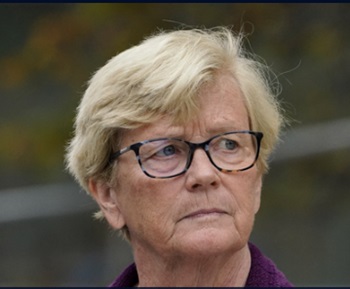 Environmentalists say Chellie Pingree’s defense of the Maine lobster industry could imperil a critically endangered whale. Doing what greens want would likely send the Democrat to political extinction. Conservation advocates are publicly pressuring Pingree to overturn a law that protects Maine’s prized lobster fishery. The calls come after one of only 360 remaining North Atlantic right whales washed up dead in February entangled in Maine lobstering rope. “I think it is a little bit more of a black mark on an otherwise fairly good conservation record,” said Brett Hartl, the government affairs director at the Center for Biological Diversity, on Pingree’s support of the pro-lobstering law. It’s a rare rebuke of a longtime ally who has a near-pristine voting record on environmental issues. Pingree says she has no plans to reverse course, but the incident highlights how lawmakers continue to balance environmental concerns with the everyday lives of their constituents. more, >>CLICK TO READ<< 17:57
Environmentalists say Chellie Pingree’s defense of the Maine lobster industry could imperil a critically endangered whale. Doing what greens want would likely send the Democrat to political extinction. Conservation advocates are publicly pressuring Pingree to overturn a law that protects Maine’s prized lobster fishery. The calls come after one of only 360 remaining North Atlantic right whales washed up dead in February entangled in Maine lobstering rope. “I think it is a little bit more of a black mark on an otherwise fairly good conservation record,” said Brett Hartl, the government affairs director at the Center for Biological Diversity, on Pingree’s support of the pro-lobstering law. It’s a rare rebuke of a longtime ally who has a near-pristine voting record on environmental issues. Pingree says she has no plans to reverse course, but the incident highlights how lawmakers continue to balance environmental concerns with the everyday lives of their constituents. more, >>CLICK TO READ<< 17:57
Technology Helping Prevent Whale Strikes
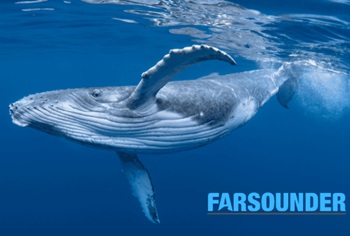 As many as 80 whales are estimated to die each year off the West Coast of the US as a result of ship strikes, and about a third of all Right Whale deaths in the Atlantic are attributed to ship strikes. Sperm Whales in the Mediterranean are also listed as an endangered species, and ship strike is their leading cause of death. Whale avoidance is clearly top of mind for mariners. It is time to explore how currently available technology can help in this endeavor. As the world looks to new technologies to assist in whale avoidance, it is important to ensure there is no impact on the whales and the environment. Likewise, as governmental regulations evolve, operating vessels near whales requires a strong understanding of the rules implemented to protect them. There should be strict adherence to safe practices that coincide with the use of the right technologies. more, >>CLICK TO READ<< 10:42
As many as 80 whales are estimated to die each year off the West Coast of the US as a result of ship strikes, and about a third of all Right Whale deaths in the Atlantic are attributed to ship strikes. Sperm Whales in the Mediterranean are also listed as an endangered species, and ship strike is their leading cause of death. Whale avoidance is clearly top of mind for mariners. It is time to explore how currently available technology can help in this endeavor. As the world looks to new technologies to assist in whale avoidance, it is important to ensure there is no impact on the whales and the environment. Likewise, as governmental regulations evolve, operating vessels near whales requires a strong understanding of the rules implemented to protect them. There should be strict adherence to safe practices that coincide with the use of the right technologies. more, >>CLICK TO READ<< 10:42
Alaska’s declining crab population due to trawlers catches attention of lawmaker
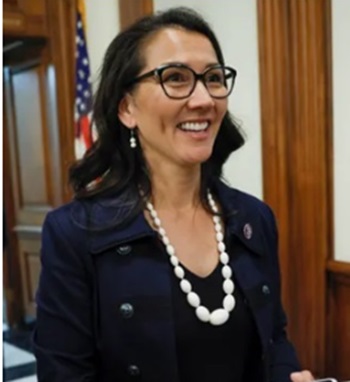 Alaska Rep. Mary Peltola’s mounting frustration with the largely Seattle-based pollock industry’s decades-old issue of inadvertently damaging the state’s rapidly declining crab populations and critical habitat for many other species may result in legislation a move heralded by the scientific and conservation communities. Members of the scientific community concerned with sustainability and conservation are currently in a deadlock with industrial pollock trawler fleets and the North Pacific Fishery Management Council over federal fishery regulations, including pelagic, or “mid-water” trawling, which uses wide-mouthed nets designed to target schools of Bering Sea Alaskan pollock. The Alaska Marine Conservation Council released a report in February 2023 analyzing the trawlers’ impact on red king crab habitats following the 2022 closure of the Alaska snow crab fisheries, which is still ongoing, and a two-year closure for Bristol Bay king crab that ended in 2023, underscoring the devastating environmental and financial toll. more, >>CLICK TO READ<< 19:17
Alaska Rep. Mary Peltola’s mounting frustration with the largely Seattle-based pollock industry’s decades-old issue of inadvertently damaging the state’s rapidly declining crab populations and critical habitat for many other species may result in legislation a move heralded by the scientific and conservation communities. Members of the scientific community concerned with sustainability and conservation are currently in a deadlock with industrial pollock trawler fleets and the North Pacific Fishery Management Council over federal fishery regulations, including pelagic, or “mid-water” trawling, which uses wide-mouthed nets designed to target schools of Bering Sea Alaskan pollock. The Alaska Marine Conservation Council released a report in February 2023 analyzing the trawlers’ impact on red king crab habitats following the 2022 closure of the Alaska snow crab fisheries, which is still ongoing, and a two-year closure for Bristol Bay king crab that ended in 2023, underscoring the devastating environmental and financial toll. more, >>CLICK TO READ<< 19:17
Is forced labor in Indian exports affecting Louisiana shrimpers? Congress investigates
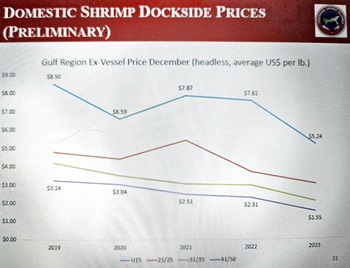 A congressional committee is investigating allegations of slave labor in the Indian shrimp industry. Such practices are among those blamed for rock-bottom shrimp prices negatively affecting Louisiana shrimpers. The House Committee on Natural Resources is investigating accusations of forced labor as well as importation of illegally obtained fish products. Additionally, the committee is looking at fraudulent reporting through the Seafood Import Monitoring Program, and the illegal use of antibiotics. The health of the American shrimp industry can often be measured by the number of landings each year. Those numbers have been on a mostly steady decline since 2001, with only five years above the downhill slope. more, >>CLICK TO READ<< 09:10
A congressional committee is investigating allegations of slave labor in the Indian shrimp industry. Such practices are among those blamed for rock-bottom shrimp prices negatively affecting Louisiana shrimpers. The House Committee on Natural Resources is investigating accusations of forced labor as well as importation of illegally obtained fish products. Additionally, the committee is looking at fraudulent reporting through the Seafood Import Monitoring Program, and the illegal use of antibiotics. The health of the American shrimp industry can often be measured by the number of landings each year. Those numbers have been on a mostly steady decline since 2001, with only five years above the downhill slope. more, >>CLICK TO READ<< 09:10
Fishermen Join Fight for Herring Trawler Rules
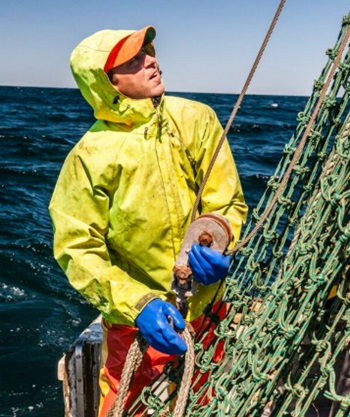 The marine ecosystem around Cape Cod is built on the backs of Atlantic herring. These baitfish school in massive numbers, providing food for marine mammals, seabirds, and large fish like cod. Their eggs, which they lay in the fall and are dense enough in spots to carpet the ocean floor, are food for crabs and other bottom-dwelling animals. They are also a $4.5-million fishery, used as bait for lobster traps, turned into canned sardines, and sold, frozen or salted, overseas. But with the Atlantic herring population in a steep decline, and the most recent attempt at a rule to protect the fish thwarted, Cape Cod fishermen are advocating for new ways to protect the species. more, >>CLICK TO READ<< 09:21
The marine ecosystem around Cape Cod is built on the backs of Atlantic herring. These baitfish school in massive numbers, providing food for marine mammals, seabirds, and large fish like cod. Their eggs, which they lay in the fall and are dense enough in spots to carpet the ocean floor, are food for crabs and other bottom-dwelling animals. They are also a $4.5-million fishery, used as bait for lobster traps, turned into canned sardines, and sold, frozen or salted, overseas. But with the Atlantic herring population in a steep decline, and the most recent attempt at a rule to protect the fish thwarted, Cape Cod fishermen are advocating for new ways to protect the species. more, >>CLICK TO READ<< 09:21
44-foot Whale Carcass on Bow of Cruise Ship Baffles NY Authorities
 Marine conservationists and government scientists are seeking clues to the mystery of how a 44-foot whale carcass ended up on the bow of a cruise liner, where it was discovered as the ship approached New York City’s Port of Brooklyn over the weekend. A necropsy, the animal equivalent of an autopsy, identified the deceased marine mammal as a mature female sei whale, an endangered species typically found in deep waters far from land, the Atlantic Marine Conservation Society said on Wednesday. One key question is whether the whale’s death came before or after its contact with the vessel, according to the non-profit organization, based in Hampton Bays, New York. Video, more, >>CLICK TO READ<< 08:54
Marine conservationists and government scientists are seeking clues to the mystery of how a 44-foot whale carcass ended up on the bow of a cruise liner, where it was discovered as the ship approached New York City’s Port of Brooklyn over the weekend. A necropsy, the animal equivalent of an autopsy, identified the deceased marine mammal as a mature female sei whale, an endangered species typically found in deep waters far from land, the Atlantic Marine Conservation Society said on Wednesday. One key question is whether the whale’s death came before or after its contact with the vessel, according to the non-profit organization, based in Hampton Bays, New York. Video, more, >>CLICK TO READ<< 08:54
Federal Waters off Texas Close to Shrimping on May 15, 2024
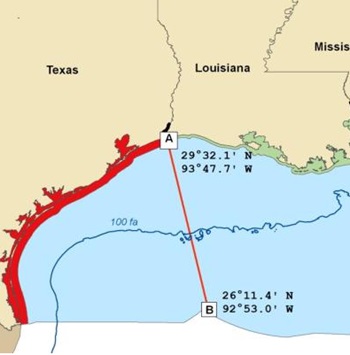 The shrimp fishery is closed annually off Texas to allow brown shrimp to reach a larger and more valuable size prior to harvest, and to prevent waste of brown shrimp that might otherwise be discarded due to their small size. The Texas closure ranges from 45 to 60 days. The closing date is based on catch rates of brown shrimp collected with seine gear by the Coastal Fisheries Division of the Texas Parks and Wildlife Department, mean length of shrimp collected in April, percent of samples containing shrimp, and periods of maximum nocturnal ebb tidal flow. Texas will re-open state waters to shrimp trawling based on sampling projections of when brown shrimp will reach a mean size of 112 mm, and when maximum duration ebb tides will occur. NOAA Fisheries will re-open federal waters off Texas when Texas re-opens its state waters. more, >>CLICK TO READ<< 11:10
The shrimp fishery is closed annually off Texas to allow brown shrimp to reach a larger and more valuable size prior to harvest, and to prevent waste of brown shrimp that might otherwise be discarded due to their small size. The Texas closure ranges from 45 to 60 days. The closing date is based on catch rates of brown shrimp collected with seine gear by the Coastal Fisheries Division of the Texas Parks and Wildlife Department, mean length of shrimp collected in April, percent of samples containing shrimp, and periods of maximum nocturnal ebb tidal flow. Texas will re-open state waters to shrimp trawling based on sampling projections of when brown shrimp will reach a mean size of 112 mm, and when maximum duration ebb tides will occur. NOAA Fisheries will re-open federal waters off Texas when Texas re-opens its state waters. more, >>CLICK TO READ<< 11:10
NOAA Breaks Ground on a New Marine Operations Center Facility in Newport, Rhode Island funded by President Biden’s Investing in America Agenda
 Today, the Department of Commerce’s National Oceanic and Atmospheric Administration (NOAA) held a groundbreaking ceremony for a new facility on Naval Station Newport in Rhode Island that will serve as the future home of the NOAA Marine Operations Center-Atlantic. In December, the NOAA Marine Operations Center-Atlantic, on behalf of NOAA, awarded $146,778,932 to Skanska USA to build the new NOAA facility. The design and construction of the facility is funded in part by the Inflation Reduction Act, the largest climate investment in history, as part of President Biden’s Investing in America agenda. The facility will include a pier to accommodate four large vessels, a floating dock for smaller vessels, space for vessel repairs and parking, and a building to be used for shoreside support and as a warehouse. Construction is anticipated to be completed in 2027. This project will operate under a Project Labor Agreement, consistent with EO 14063, issued by President Biden. more, >>CLICK TO READ<< 15:39
Today, the Department of Commerce’s National Oceanic and Atmospheric Administration (NOAA) held a groundbreaking ceremony for a new facility on Naval Station Newport in Rhode Island that will serve as the future home of the NOAA Marine Operations Center-Atlantic. In December, the NOAA Marine Operations Center-Atlantic, on behalf of NOAA, awarded $146,778,932 to Skanska USA to build the new NOAA facility. The design and construction of the facility is funded in part by the Inflation Reduction Act, the largest climate investment in history, as part of President Biden’s Investing in America agenda. The facility will include a pier to accommodate four large vessels, a floating dock for smaller vessels, space for vessel repairs and parking, and a building to be used for shoreside support and as a warehouse. Construction is anticipated to be completed in 2027. This project will operate under a Project Labor Agreement, consistent with EO 14063, issued by President Biden. more, >>CLICK TO READ<< 15:39
Scallop Research Set-Aside Program to Support 14 New Projects; Several 2024 Announcements Include Multi-Year Awards
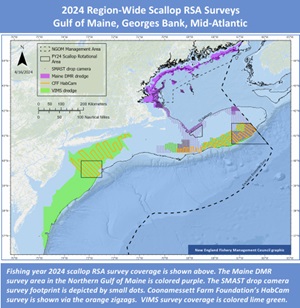 The Atlantic Sea Scallop Research Set-Aside (RSA) Program will support 14 new projects that were selected from the 2024 RSA solicitation. Several awards will support multi-year research, including a four-year regional survey effort. The set-aside harvest is expected to generate $22 million in revenue. Of that total, $5 million will fund the targeted research and $17 million will compensate industry partners who harvest the set-aside scallops. To determine the award amounts, the price of sea scallops was projected to average $14 per pound of meats. Charts, more, >>CLICK TO READ<< 12:38
The Atlantic Sea Scallop Research Set-Aside (RSA) Program will support 14 new projects that were selected from the 2024 RSA solicitation. Several awards will support multi-year research, including a four-year regional survey effort. The set-aside harvest is expected to generate $22 million in revenue. Of that total, $5 million will fund the targeted research and $17 million will compensate industry partners who harvest the set-aside scallops. To determine the award amounts, the price of sea scallops was projected to average $14 per pound of meats. Charts, more, >>CLICK TO READ<< 12:38






